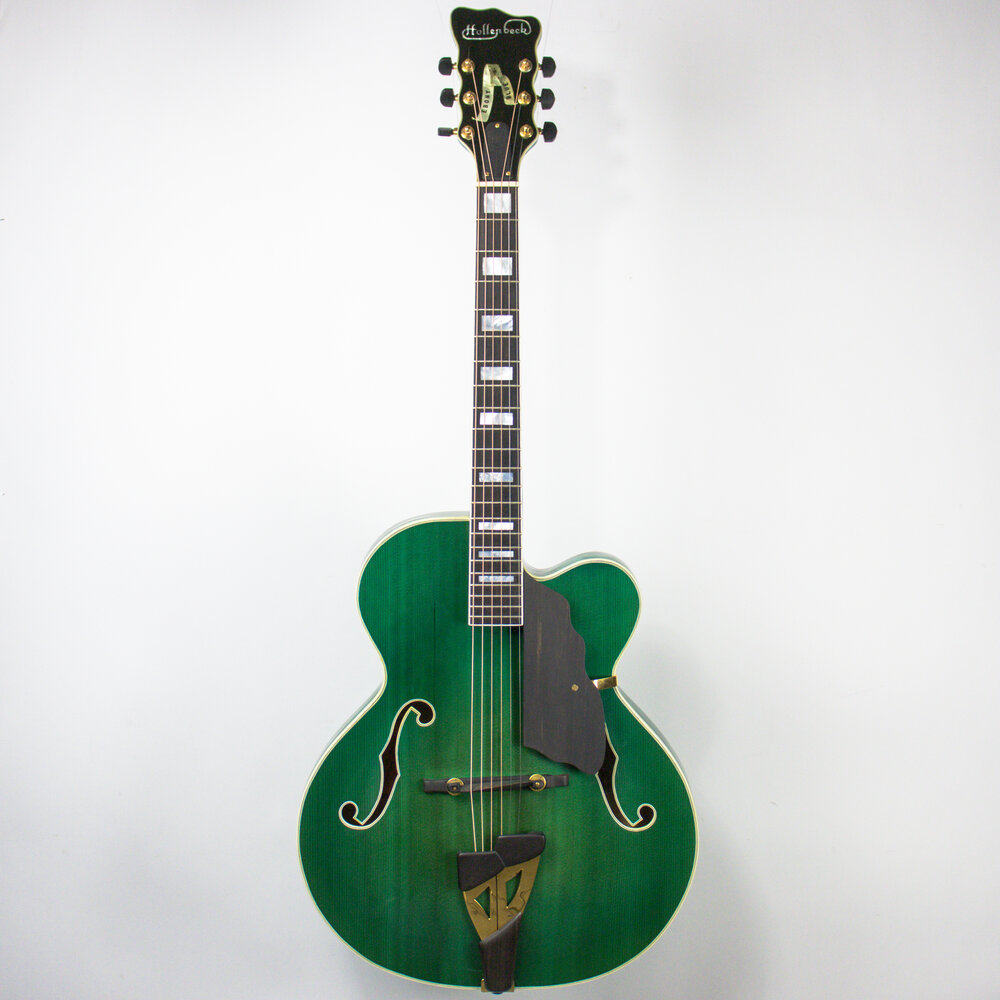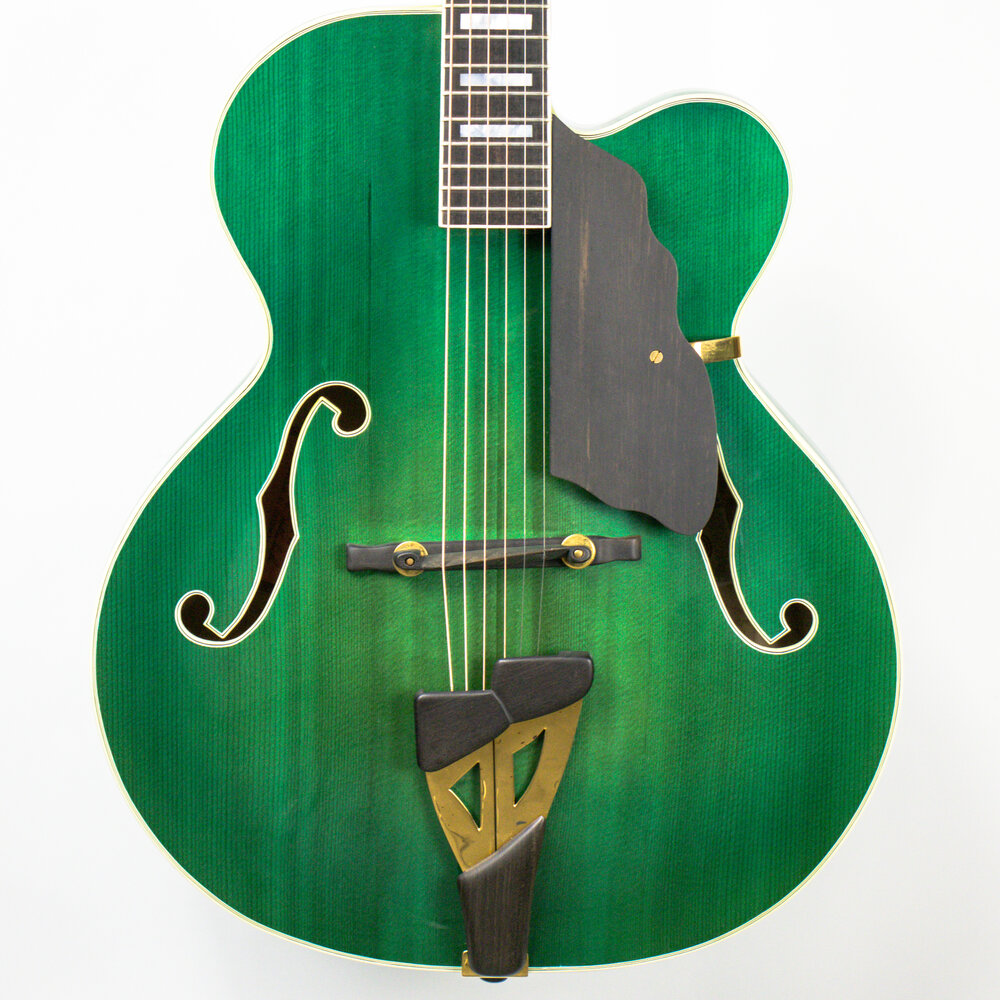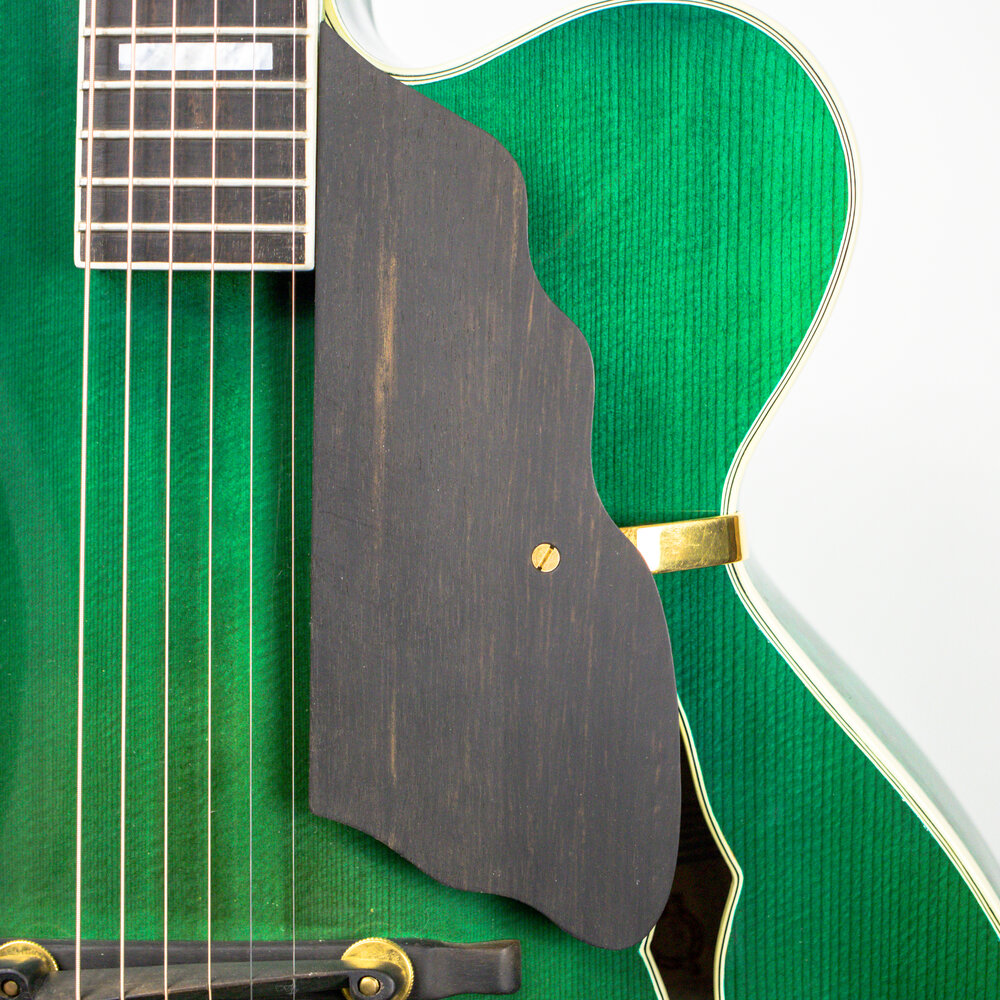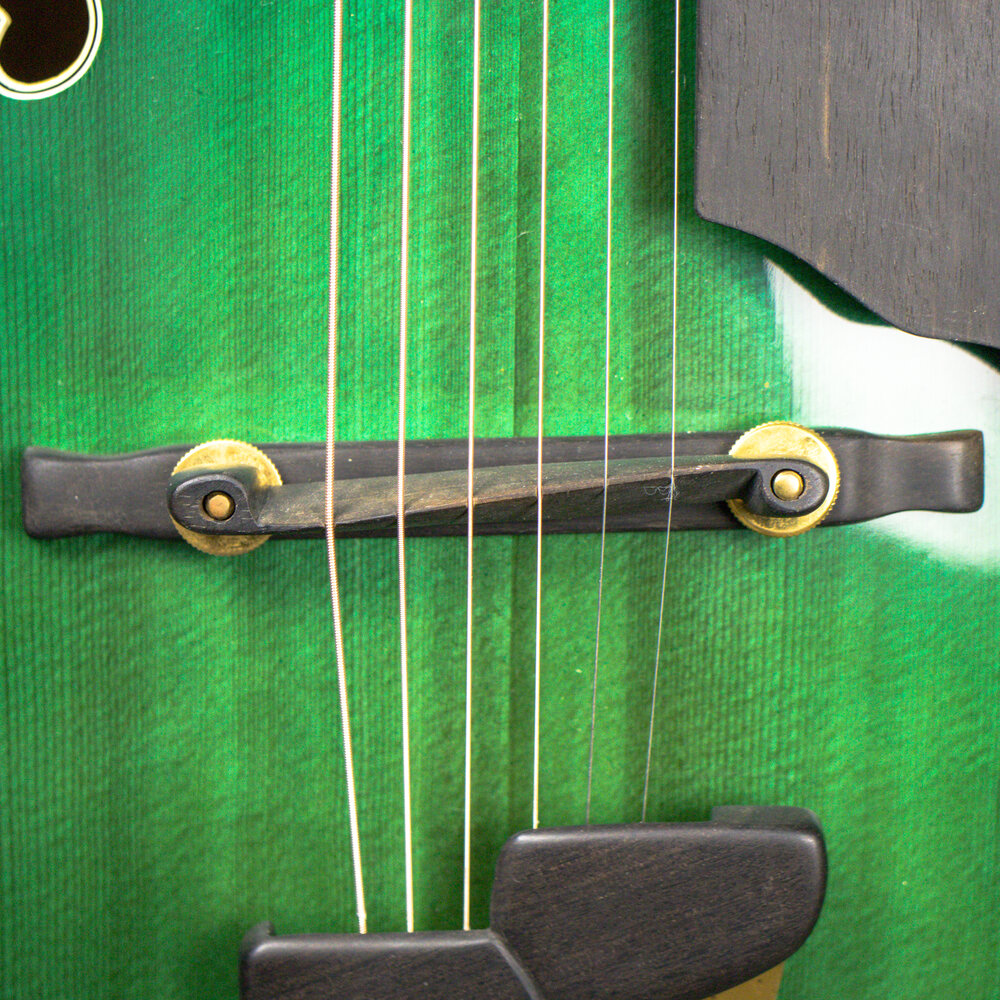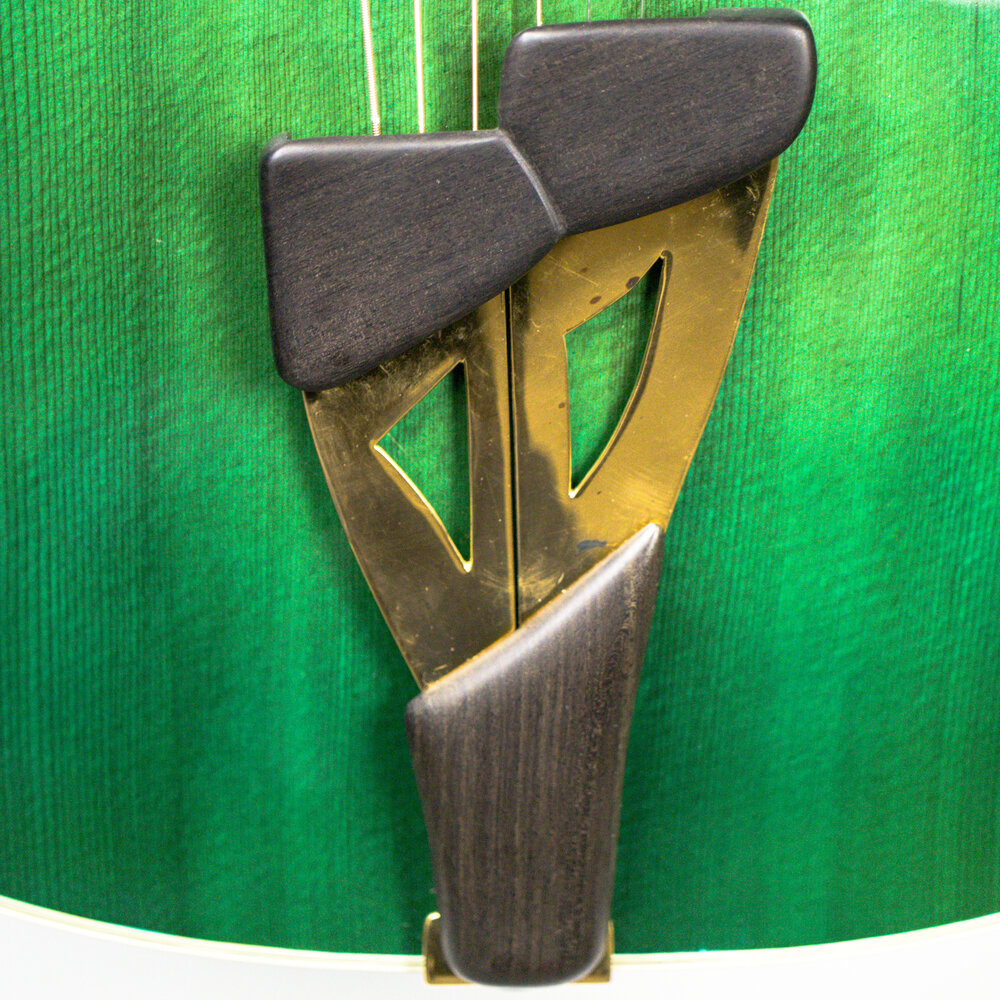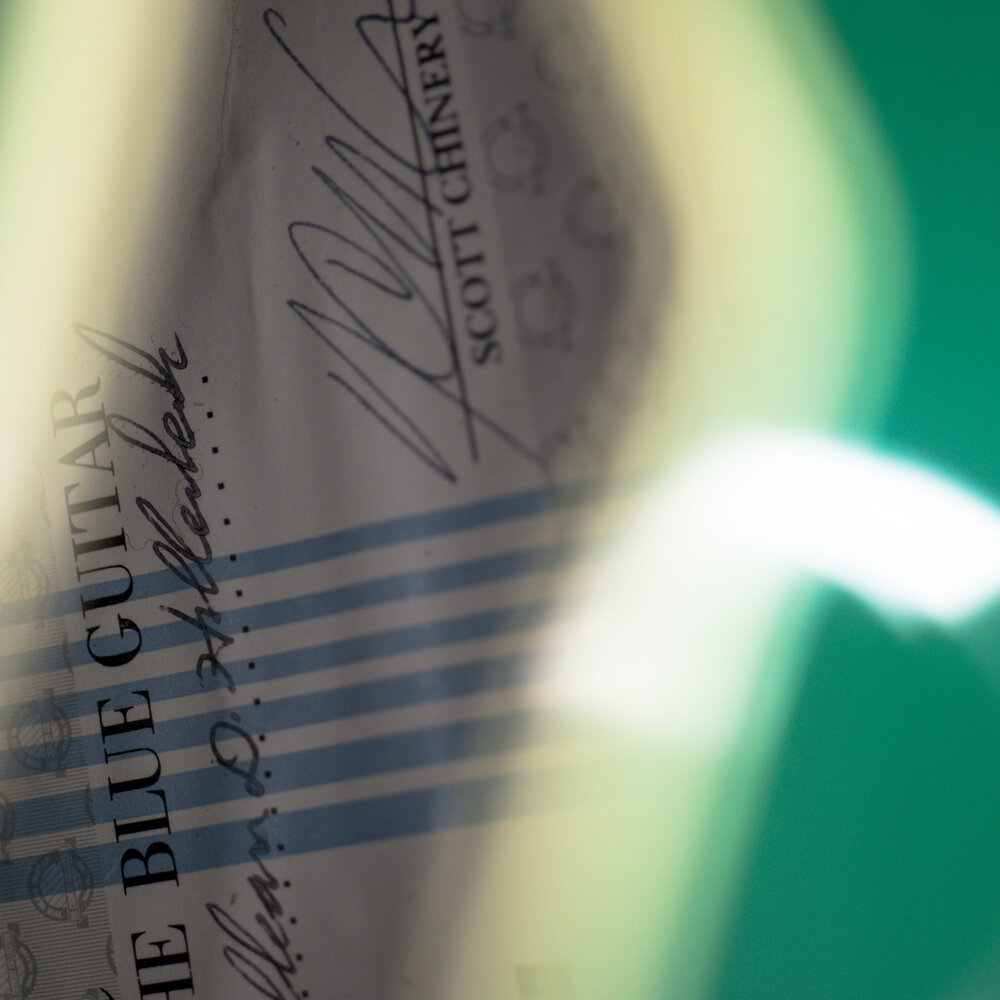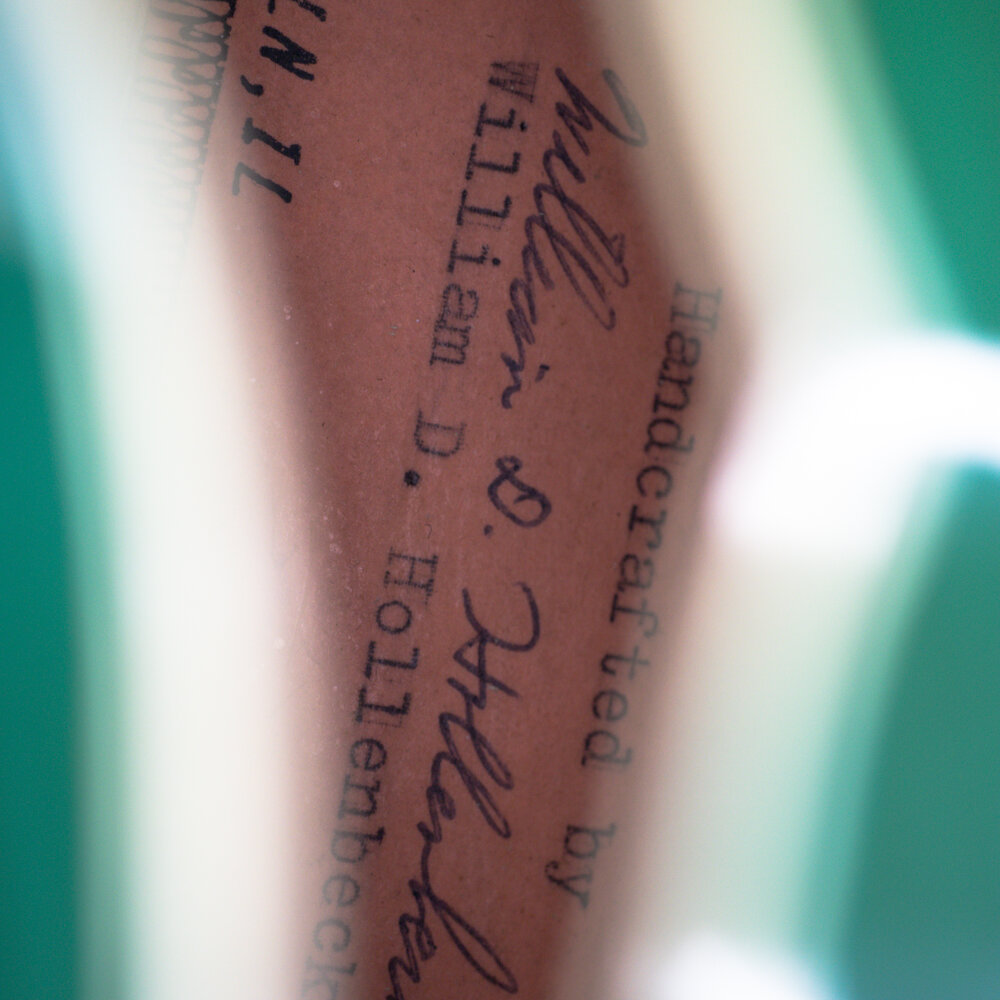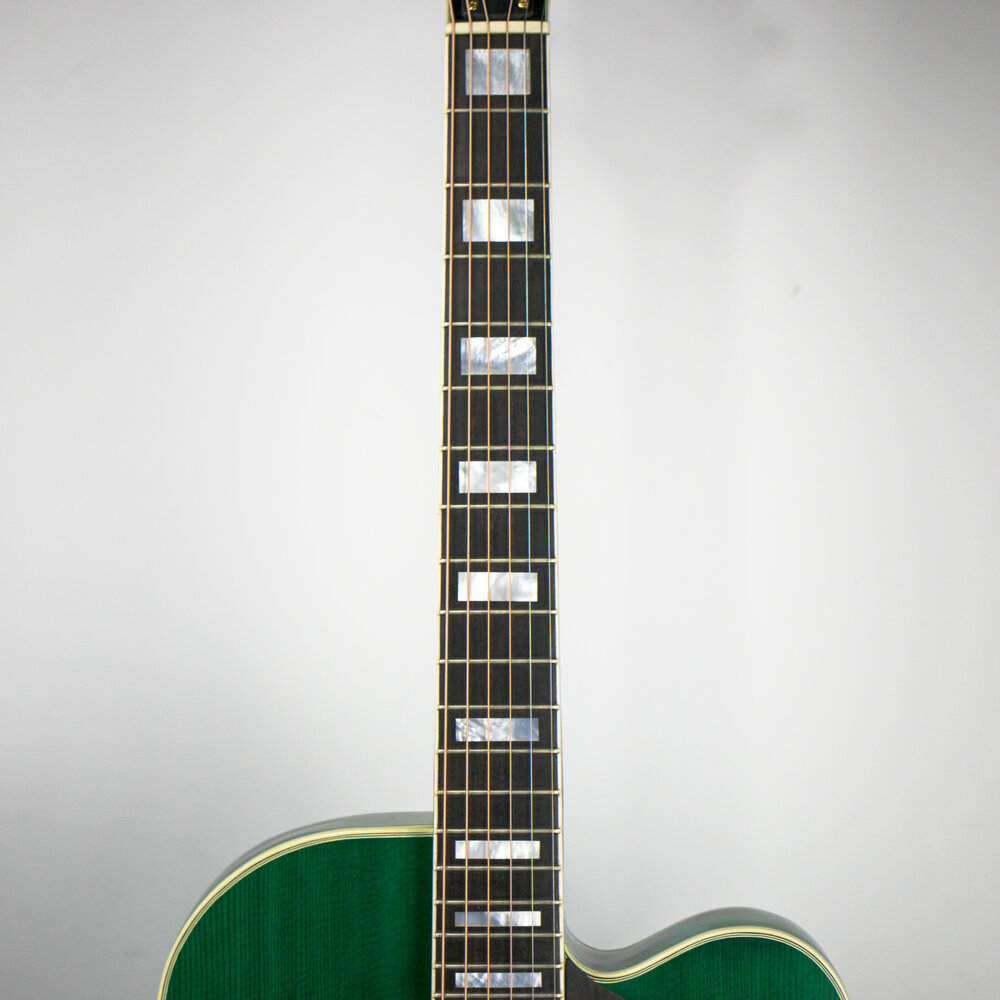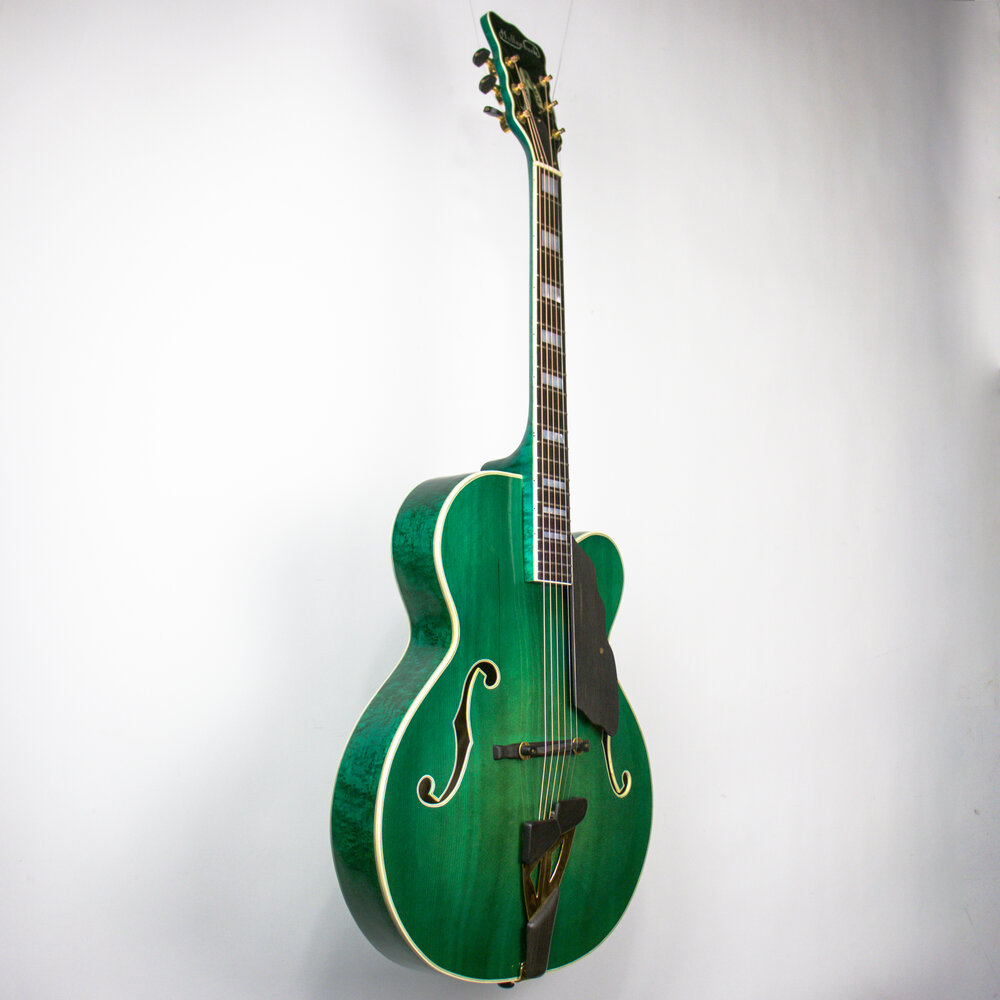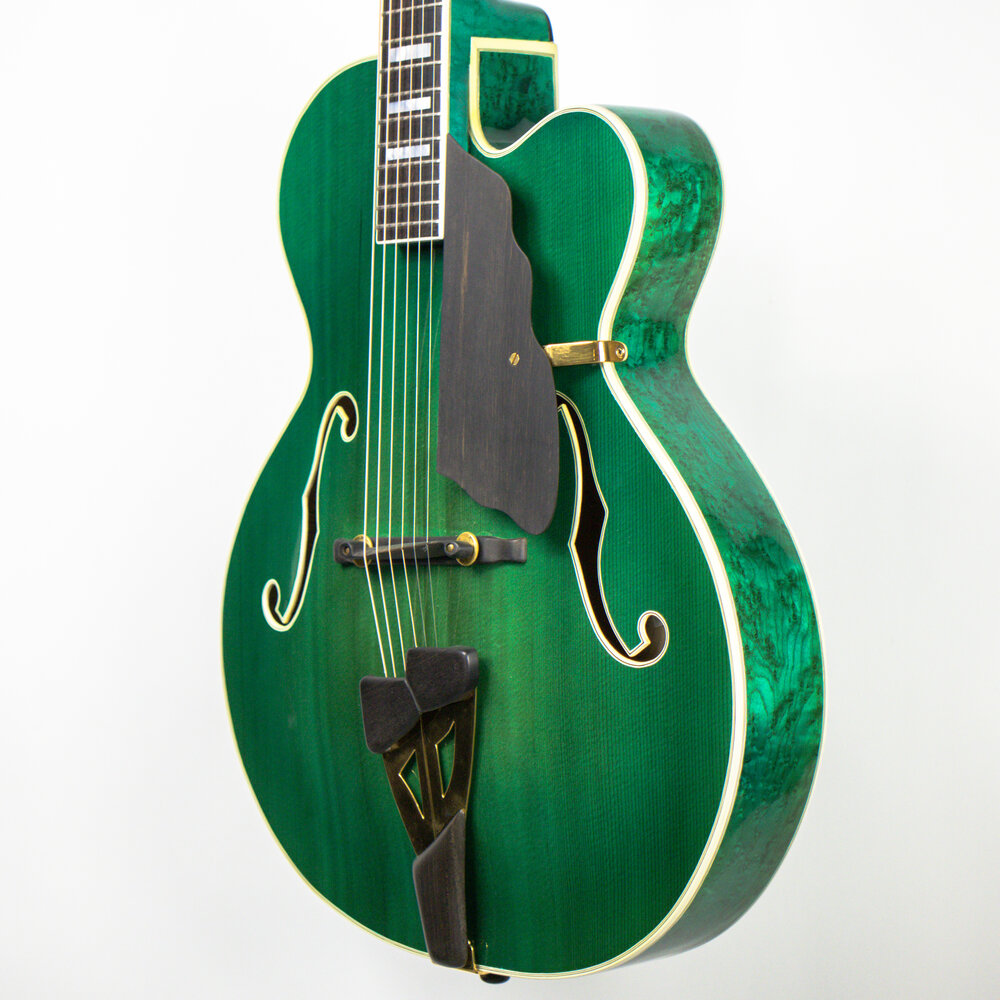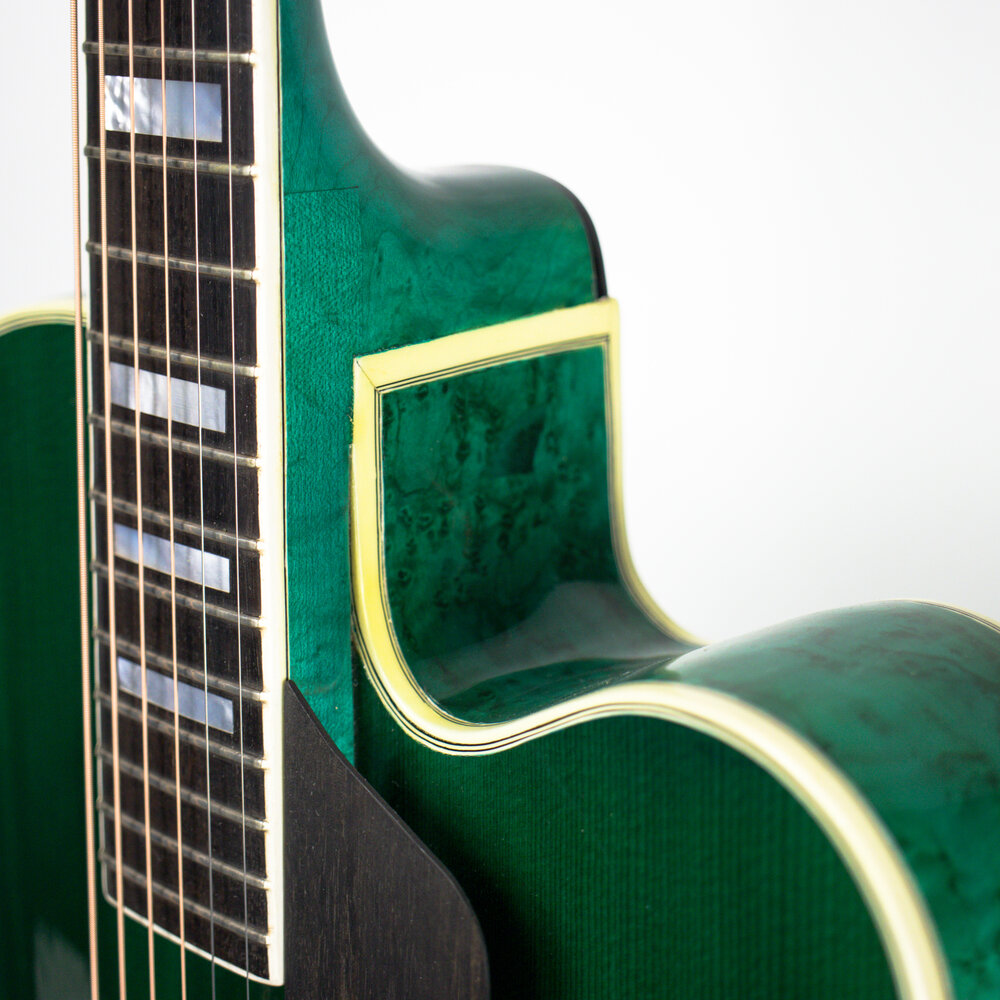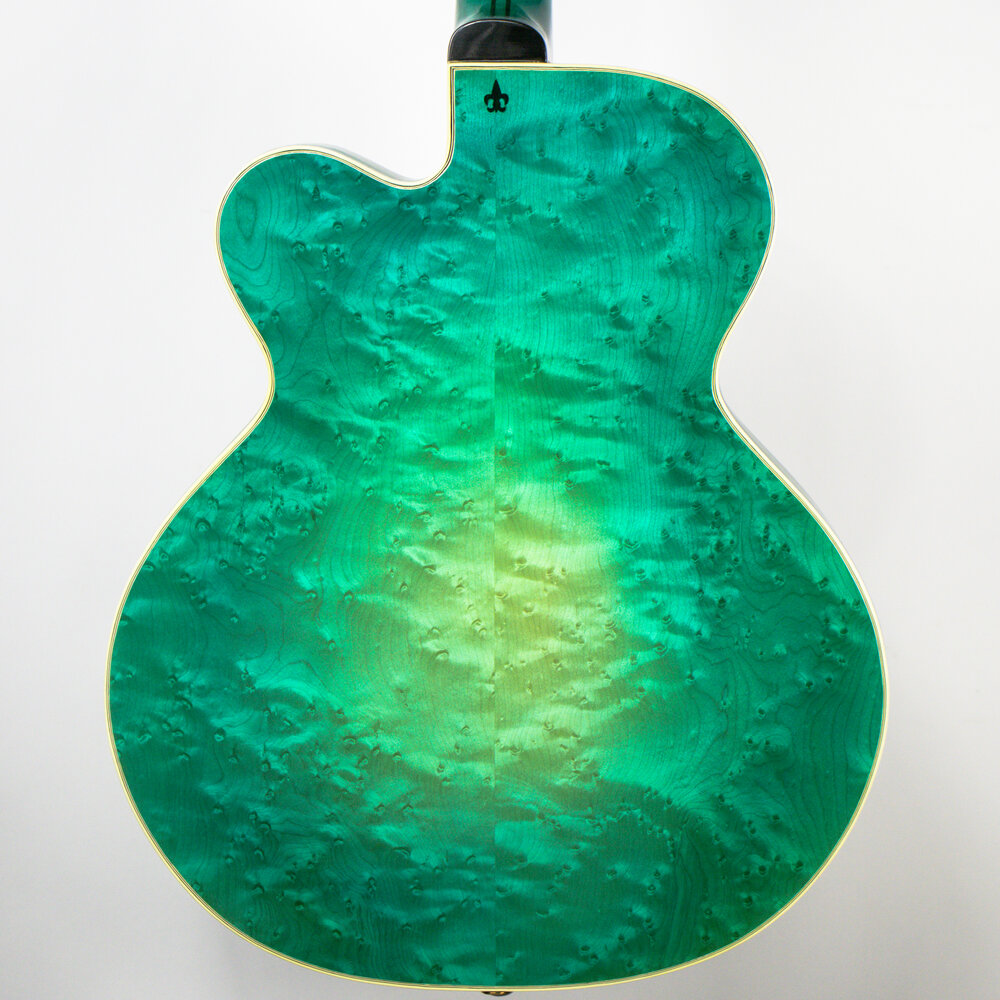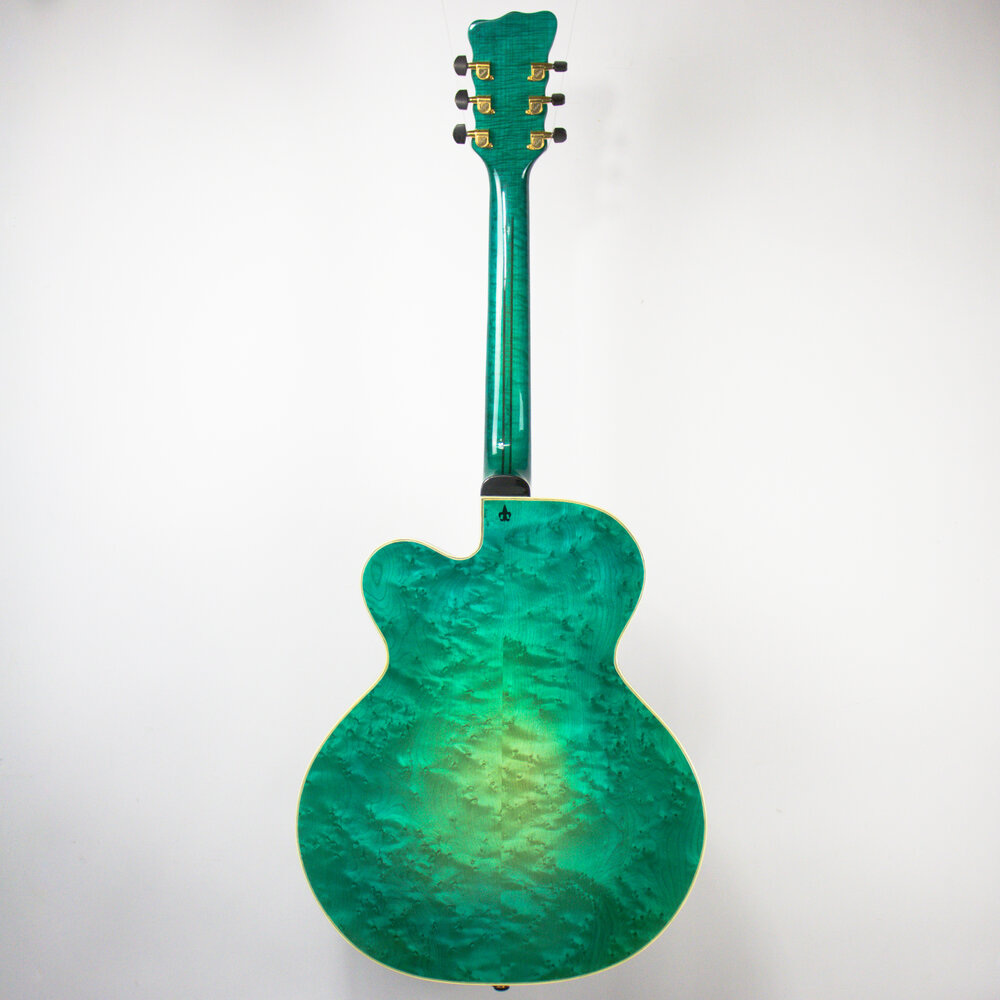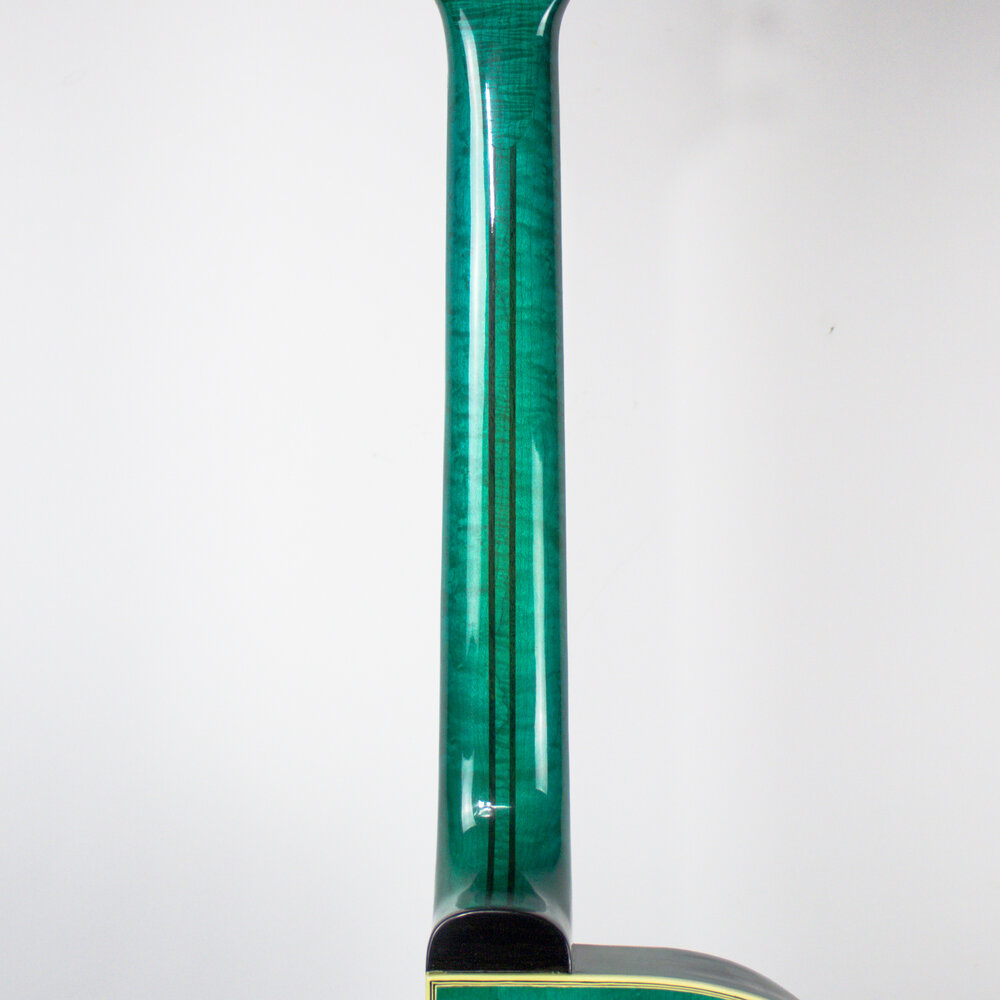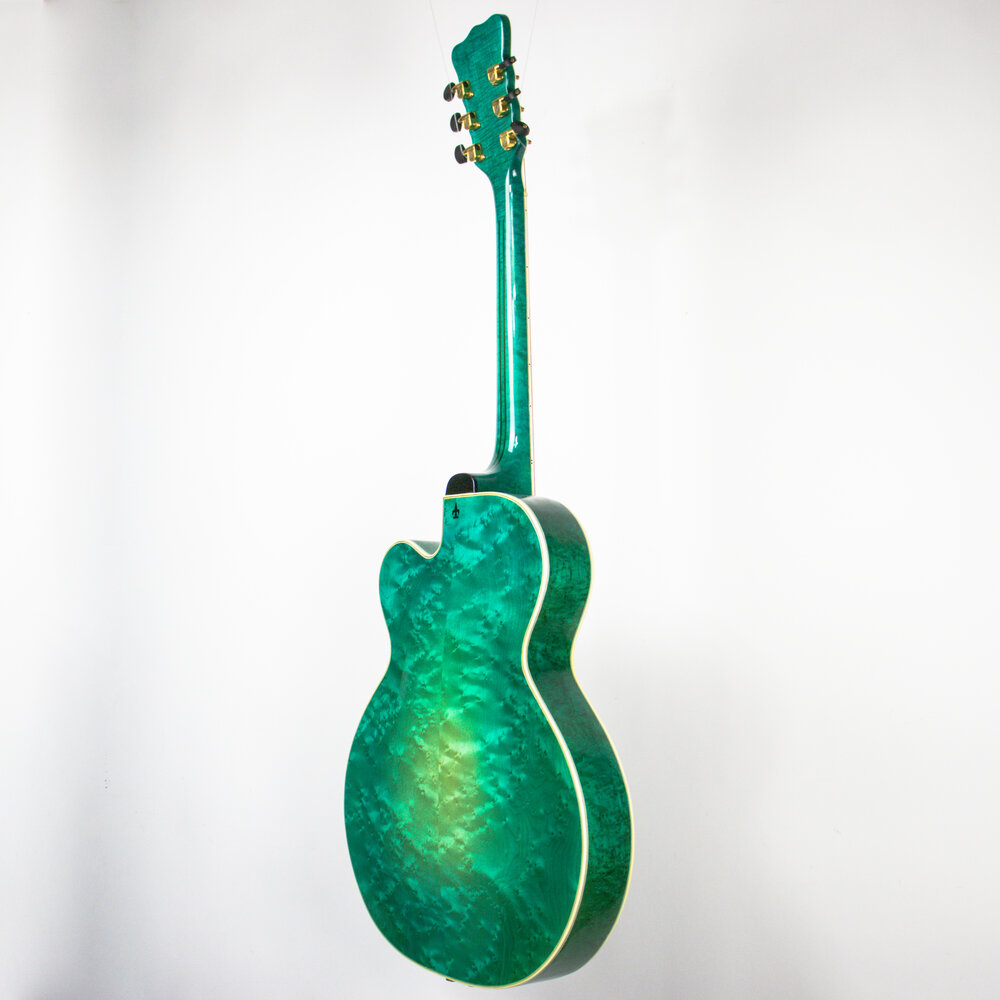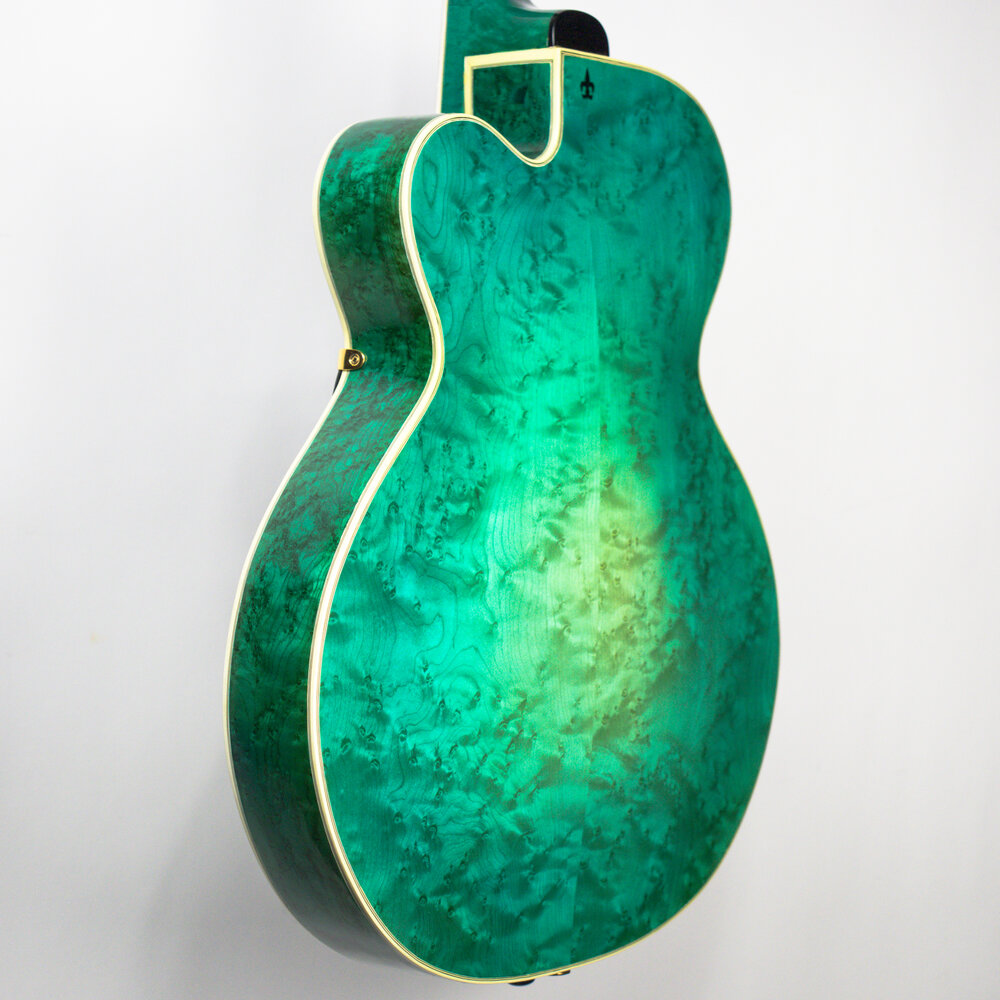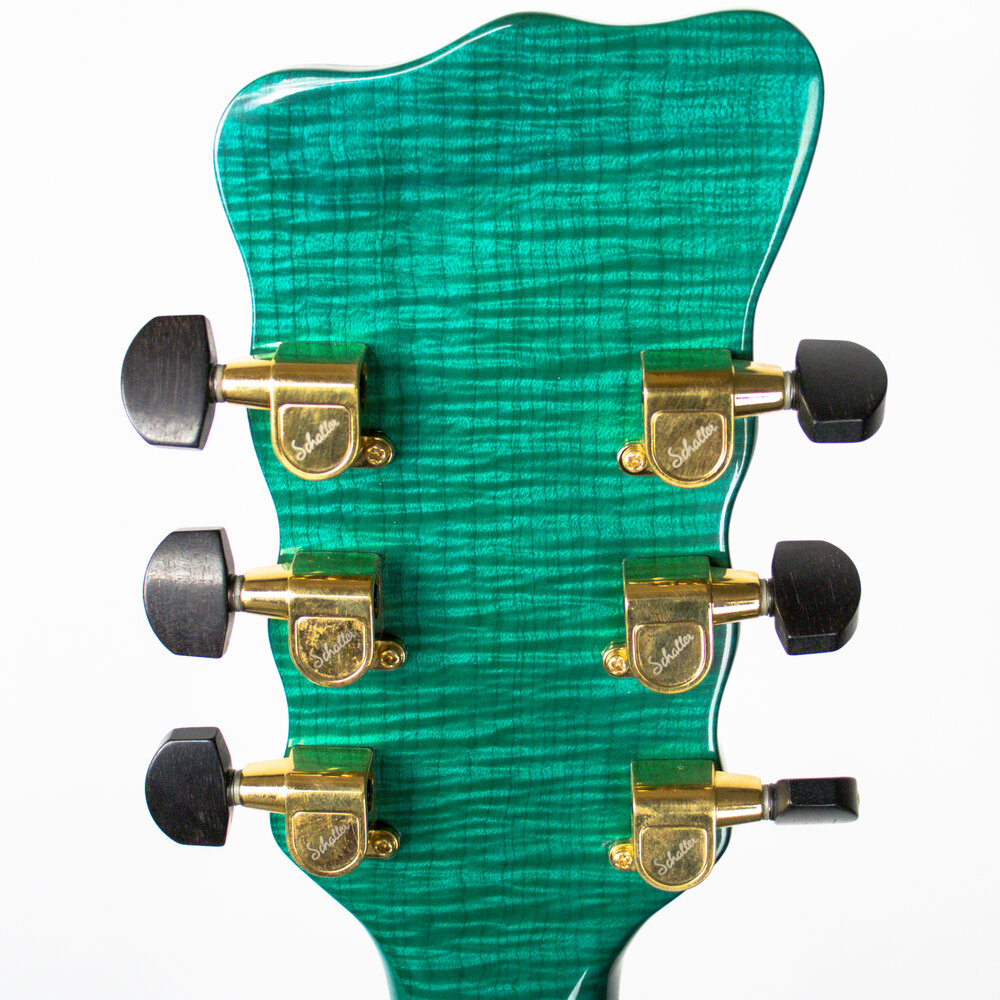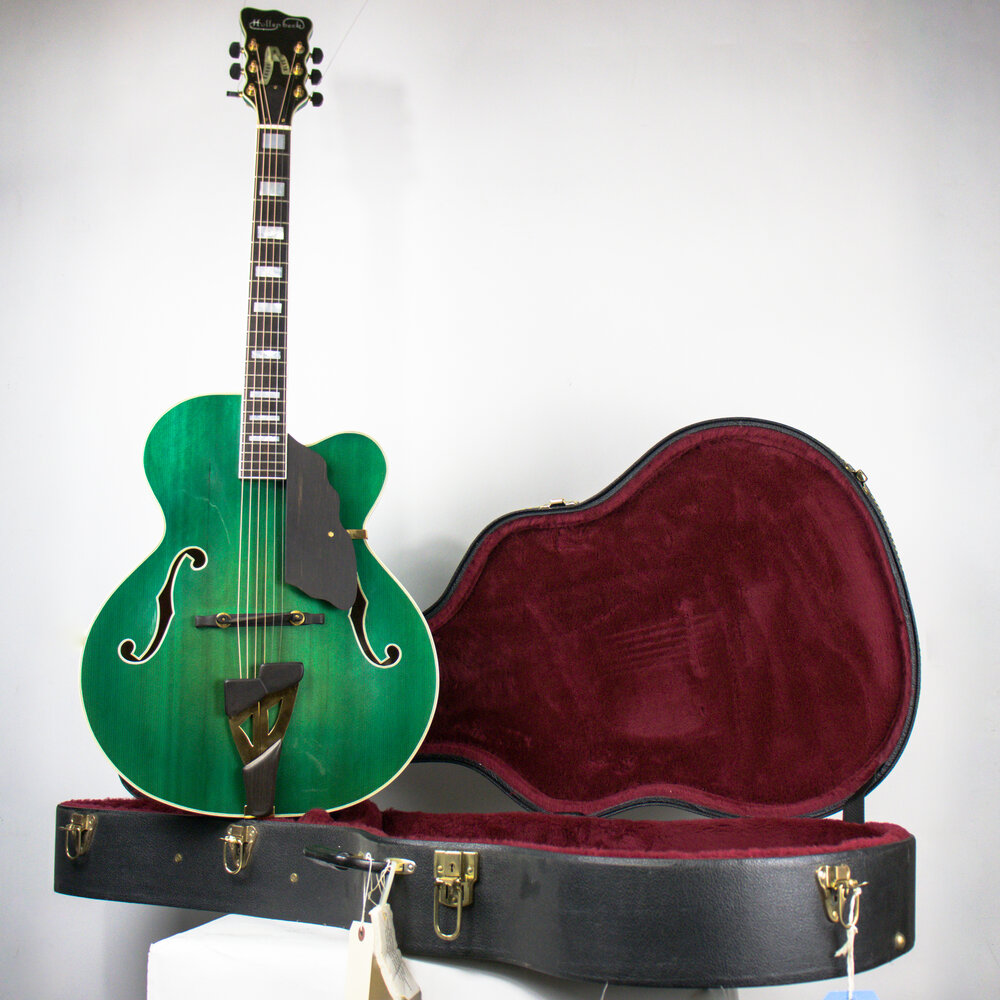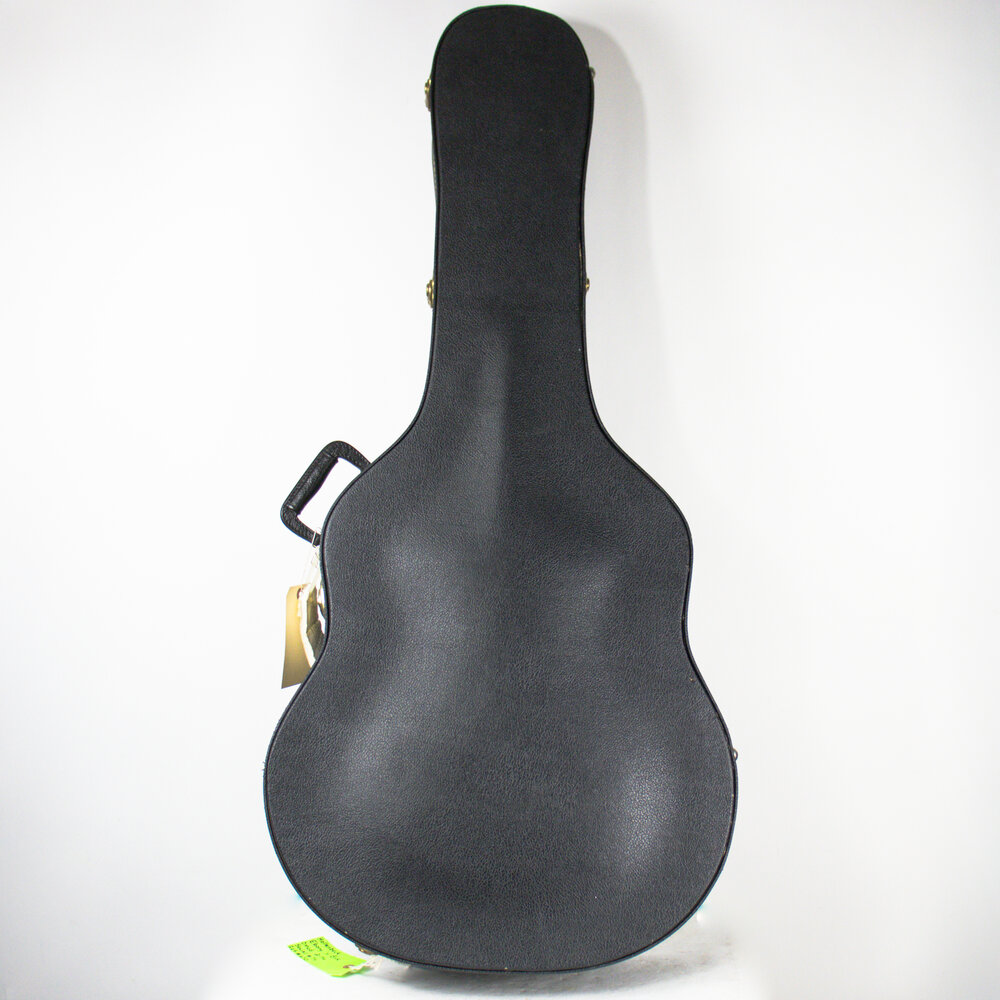Bill Hollenbeck–Ebony ‘N’ Blue
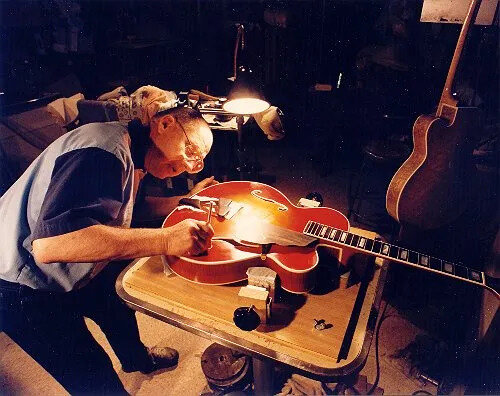
Bill Hollenbeck (1934-2008) As a teenager in central Illinois, Bill Hollenbeck was already a guitar aficionado. While other members of his family played piano, organ, and saxophone, Bill was busy adapting or embellishing his guitars. After attaining a Bachelor’s Degree in Industrial Arts, and a Masters Degree in Industry and Technology, Bill embarked on a career in education, teaching electronics to high school students for 25 years. However, he continued to work with the woods he loved, and in 1970 met a gentleman from Peoria, Illinois, who changed the focus of his life. Bill Barker, a well-known luthier from the midwest, agreed to let Hollenbeck serve as an apprentice and learn the art of guitar construction. Bill drove to Barker’s shop on weekends, and worked under Barker’s tutelage for many years, assisting and building numerous guitars.
In 1990, Bill opted to leave the field of education, and devote himself full-time to guitar building, restoration, and repair. His guitars are noted for their mid-range acoustic attack, because Bill designs them around the piano, the “mother” of all stringed instruments — solid and stable with fantastic projection.
Bill specialized in archtop guitars, each archtop was customized for the player, with the neck and fretboard sizes fitted to each buyer’s hands. The head stocks had a unique scalloping for finger-relief when tuning the guitars. Bill was honored twice by the Smithsonian Institution: his Ebony-n-Blue guitar was in the Smithsonian’s American History Museum as part of the Scott Chinery Blue Guitar Collection, on display in the fall of 1998.
Bill Hollenbeck carried on making and repairing guitars until his death in 2008 at the age of 74.
Hollenbeck’s Ebony ‘N’ Blue was crafted with a spruce top and dense birdseye maple on the back, sides, and neck; gold Schaller machine heads with ebony tuning buttons and a five-piece neck with two contrasting strips running its length. Ebony was used on the fingerboard, truss-rod cover, bridge, saddle, and pickguard as well as the trim on the gold plated tailpiece. Abalone inlay is incorporated on the fretboard as well as on the scroll design of the headstock overlay. While the guitar looks distinctive with its look and deep green color, it most clearly differs from the other guitars in its unique tone, which is warmer and less cutting than the other guitars, very suitable for accompanying voice. The main reason appears to be in the thicknessing of the top. Whereas most of the other Blue Luthiers had the top thickest under the bridge and thinnest at the “recurve” section where the top meets the sides, Bill’s was the exact opposite. Thus, instead of having a broad, drum-like flexing of the soundboard, the Hollenbeck has a relatively smaller area of wood vibrating, but with more flexibility directly under the bridge. Take a listen to the video recordings and see if you agree.
